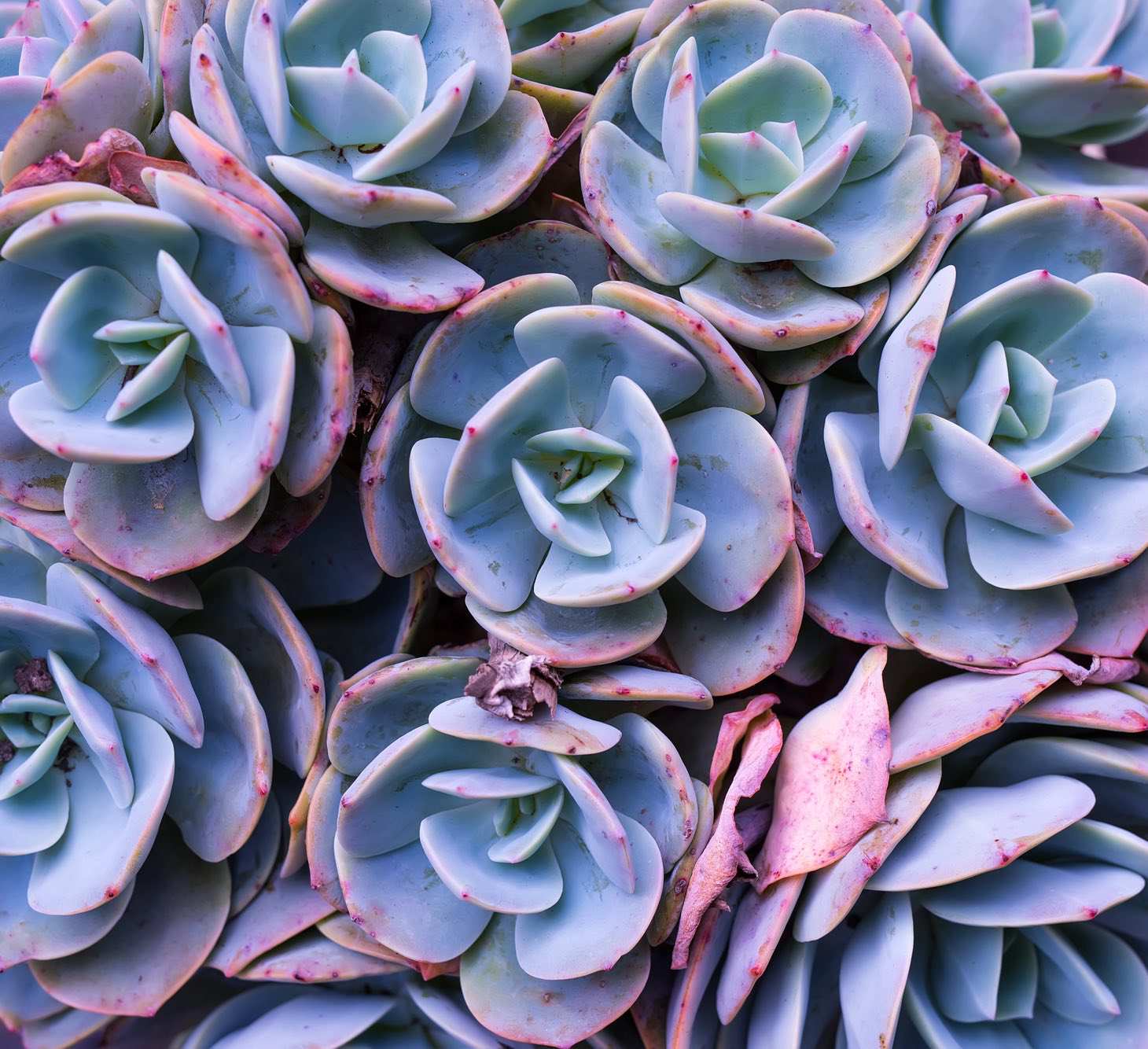Caring for Echeveria
Echeveria plants add charm to any space with their striking rosettes and vibrant colors. These succulents are not just beautiful but also relatively easy to care for. Caring for Echeveria is not too difficult making them perfect for both beginner and experienced plant enthusiasts. To keep your Echeveria thriving, place it in bright sunlight and use well-draining soil.
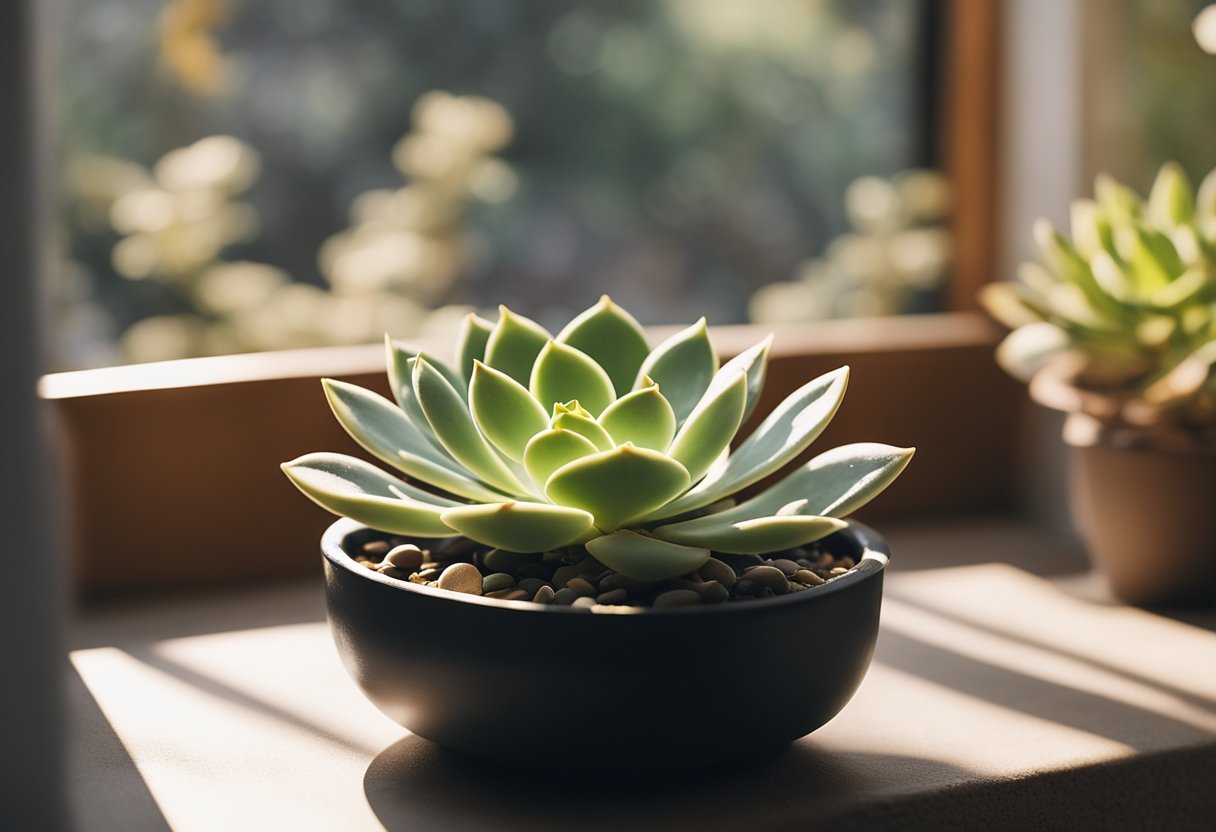
Watering and temperature play crucial roles in Echeveria care. Allow the soil to dry completely between waterings to avoid root rot, and maintain temperatures between 65 and 80°F. Echeveria thrives best in low-humidity environments, resembling its natural habitat. Propagation is also straightforward, often done through leaf cuttings, which makes expanding your collection simple and enjoyable.
Echeveria blooms can add another layer of beauty, but they require specific conditions. Adequate light and proper care ensure that these flowers make an appearance. While Echeveria is relatively low maintenance, occasional pest monitoring and periodic maintenance ensure the plant remains healthy and vibrant.
Key Takeaways
- Echeveria needs plenty of light and well-draining soil.
- Allow soil to dry out completely between waterings.
- Propagation is easy using leaf cuttings.
Understanding Echeveria
Echeveria plants are popular succulents known for their striking rosette shapes and diverse colors. As members of the Crassulaceae family, these plants offer various varieties with unique characteristics that make them a favorite among succulent enthusiasts.
Characteristics and Varieties
Echeveria plants are admired for their rosette shapes made up of fleshy leaves. These leaves can come in a range of colors, including green, blue-gray, pink, or purple. Some varieties even have unique bicolor or tricolor patterns.
There are over 150 recognized types of Echeveria. Each variety exhibits its own leaf shape, color, and size. Popular varieties include the ‘Hen and Chicks’, known for producing many offsets, and hybrids like the Echeveria ‘Perle von Nurnberg’, celebrated for its pink-purple leaves.
Natural Habitat and History
Echeveria plants are native to the semi-desert regions of Central and South America. They are drought-tolerant and have adapted to survive with minimal water, thriving in sunny, well-drained environments.
Historically, Echeveria has been a part of traditional gardens in these regions. Their ability to withstand dry conditions and their attractive appearance have made them favorites for ornamental gardening. As they gained popularity worldwide, many hybrids were developed to enhance their aesthetic appeal, creating a broad spectrum of Echeveria options for enthusiasts.
Basic Echeveria Care
Echeveria plants require specific conditions to thrive. They need plenty of sunlight, well-draining soil, and occasional watering to stay healthy.
Optimal Growing Conditions
Echeverias thrive in both indoor and outdoor environments. When kept outdoors, these succulents are perfect for rock gardens and garden beds. Indoors, they do well in a dish garden, making them great container plants. Ensure the area has good air circulation to prevent excess moisture buildup.
Temperature is a key factor in growth. They prefer warmer settings, typically between 65°F to 80°F. These plants are not always frost-tolerant, so if you keep them outside, bring them indoors during cold weather. Rainwater is ideal for watering, as it mimics their natural environment.
I have seen some Hens and Chicks survive outdoor New England winters…they pretty much shriveled up and went dormant during the winter, but then came right back to thriving plants as soon as springtime thawed everything out.
Light Requirements
Light is crucial for Echeverias. These plants need plenty of bright sunlight. Many varieties can take full sunlight, but as always observe your plants and make any bold changes gradual. They prefer about six hours of light every day, whether the plant is indoors or outdoors. If kept inside, place them near a south-facing window to ensure they get adequate lighting.
Be cautious of too much direct sunlight, as it can lead to sunburn on the leaves. It’s hard to give exact advice, because every plant and environment is different. For outdoor settings, morning sun is preferable, with some afternoon shade to protect against intense sunlight. If natural light is limited, you can use grow lights to supplement.
Soil and Potting
Echeverias thrive in well-draining soil. A cactus soil mix or succulent soil mix works well. Anything that is not too nutrient dense and is well draining should work fine.
When potting the plant, choose a container with a drainage hole to allow water to escape freely. Suitable pot sizes let the roots spread just enough without overcrowding. Repotting is needed only when the plant outgrows its container, usually every couple of years. Adding pebbles or gravel at the bottom of the pot improves drainage further but as long as your succulent soil is well-draining and your planter has a drainage hole(s) you have little to worry about.
Watering and Feeding
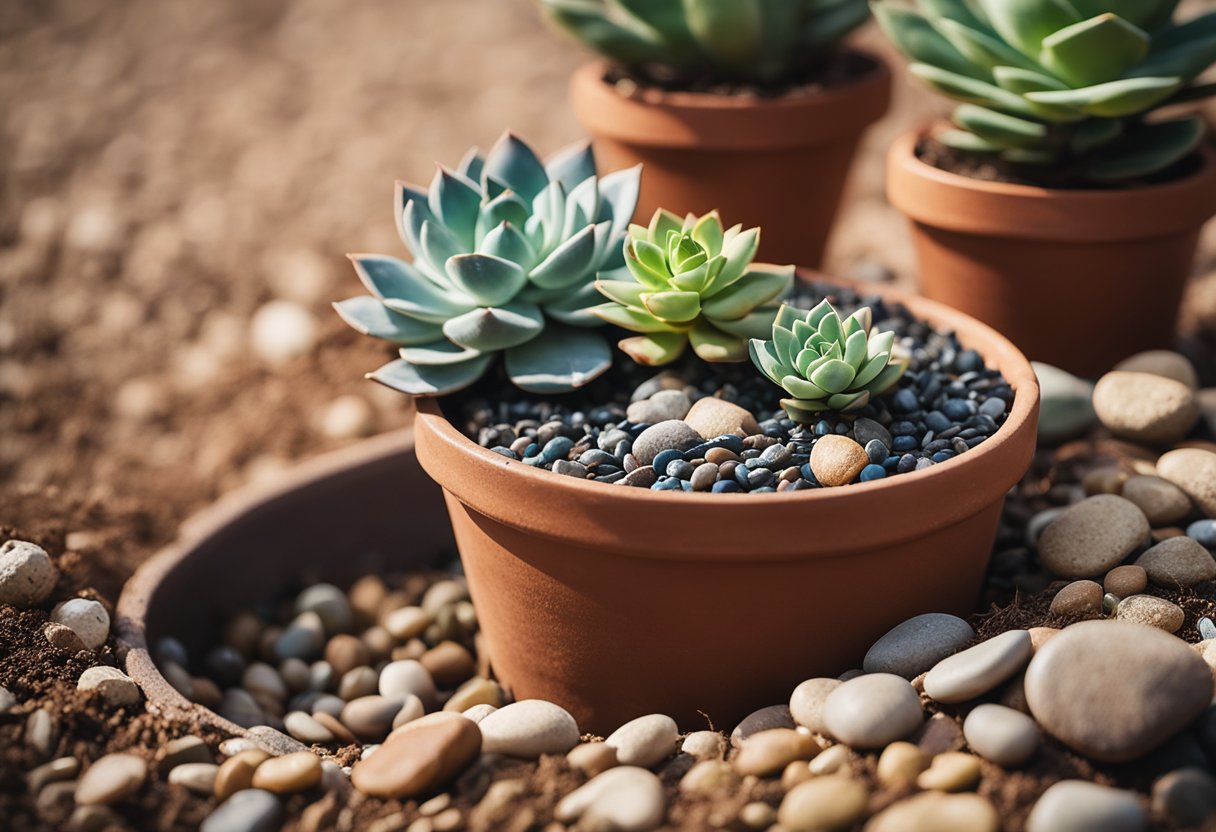
Proper care for Echeveria involves attention to both watering and feeding. Ensuring proper techniques and understanding the signs of overwatering are crucial to healthy growth.
Proper Watering Techniques
Echeveria plants thrive with the right watering schedule. Water sparingly, allowing the soil to dry out between each watering. Check if the top inch of the soil is dry before adding water. This helps prevent root rot.
Water deeply but infrequently. Pour water at the base of the plant to ensure it reaches the roots without splashing the leaves. Avoid getting the leaves wet, as this can lead to problems. Consider bottom-watering by placing the pot in a tray with water, letting the roots soak up moisture.
Fertilization Strategy
Fertilizing Echeveria is essential during the growing season. A balanced liquid fertilizer, diluted to half strength, works well. Apply every 8 weeks from spring to summer. This supports healthy growth and vibrant leaves.
Avoid getting fertilizer on the leaves, as it may cause burns. Opt for a slow-release granular formula as an alternative. Be cautious in the dormant months; feeding is unnecessary during this period.
Signs of Overwatering
Overwatering is a common issue for Echeveria. Symptoms include yellowing leaves, mushy stems, and root rot. If your plant shows these signs, reduce watering immediately. Also make sure that your pot is draining properly.
Check the soil moisture regularly to ensure it is drying out correctly. Repotting may be necessary if the soil remains soggy. Consider using a well-draining soil mix to improve conditions. Always remember, less is more when it comes to watering Echeveria.
Temperature and Humidity
Understanding the temperature and humidity needs of Echeveria plants is essential for their growth and survival. These succulents thrive in specific conditions that mimic their natural habitat for optimal health.
Preferred Temperature Range
Echeverias prefer temperatures between 65°F and 75°F during their active growing season. Ensuring the environment remains within this range promotes strong growth and vibrant rosette colors. They can tolerate temperatures slightly above this range, but extreme heat might require additional protection, such as indirect light or shading.
In cooler months, may be wise to avoid freezing temperatures, as most Echeverias lack cold hardiness. If you live in areas that fall below freezing, bringing the plants indoors or using a greenhouse can help protect against frost damage.
Humidity Tolerance
Echeverias are quite tolerant of low humidity, which makes them suitable for dry indoor environments. These succulents typically prefer a humidity level of around 40% but can manage in even drier conditions without issue.
High humidity isn’t ideal for Echeverias, as it can lead to mold or root rot. Therefore, ensure good air circulation, especially if your space tends to be more humid. If necessary, consider using a dehumidifier to maintain a favorable environment for your plants.
Propagation Methods
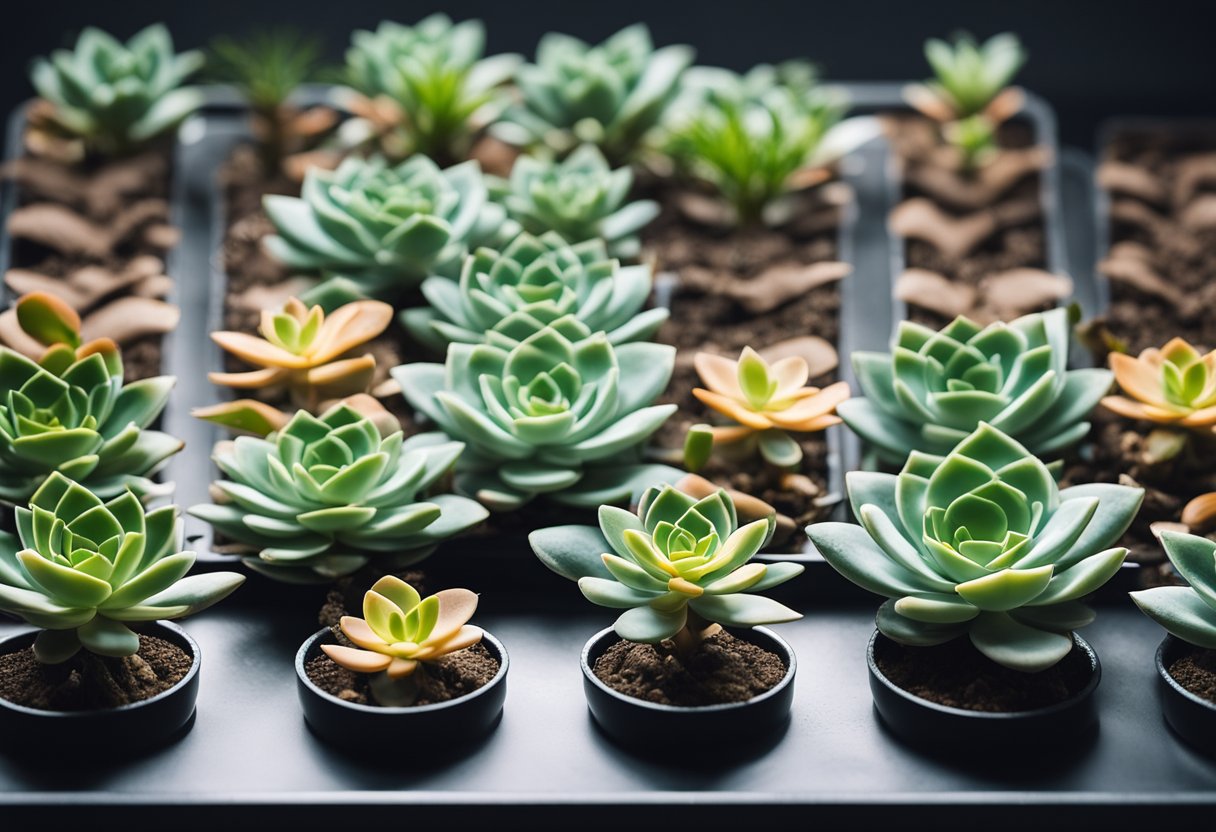
Propagating Echeveria is a rewarding way to expand your garden. Several methods, including leaf cuttings, stem cuttings, offsets, and seeds offer different results and challenges. Carefully selecting and preparing plant parts can boost your success.
Leaf Cuttings
Leaf cuttings are a popular way to propagate Echeveria. Choose a healthy, full leaf from the base of the plant. Gently remove it from the plant, ensuring you get a clean break without damaging the plant.
Let the leaf dry for a few days so it can callus over. This process helps prevent rot when planted. Once dried, place the leaf on top of your soil, slightly pressing the base into the soil. Water sparingly to avoid overwatering. Within weeks, you should see roots and new growth.
Stem Cuttings
Stem cuttings involve taking a portion of the plant stem. Select a healthy stem about an inch or two from the top. Cut it cleanly with a sharp knife or scissors.
Allow the cut end to dry and form a callus, just like with leaf cuttings. Use a well-draining soil mixture, such as cactus mix, to plant your stem. Insert the stem into the soil and provide moderate water until roots develop. You’ll soon have a strong, new plant.
Offsets and Division
Offsets are small rosettes that grow at the base of the mother plant. Carefully separate these mini plants using a gentle twist or a clean cut with a knife.
Allow the offsets to dry for a day or two to prevent rot. Plant them in a small pot with a suitable soil mix. Keep them in a shaded area until stable and gradually move them to brighter spots. This method is highly effective and nearly guarantees success.
Growing from Seeds
Propagation from seeds takes patience. You can collect seeds from mature Echeverias or purchase quality seeds from a trusted supplier. Sow the seeds in a shallow tray filled with sandy, well-draining soil.
Lightly cover the seeds with a thin layer of soil. Water gently and keep the soil moist, ensuring it doesn’t become waterlogged. Place the tray in a warm, bright location but away from direct sunlight. Germination can take several weeks.
Each method requires patience and the right conditions to thrive. Proper care ensures healthy growth and long-lasting Echeverias.
Periodic Maintenance
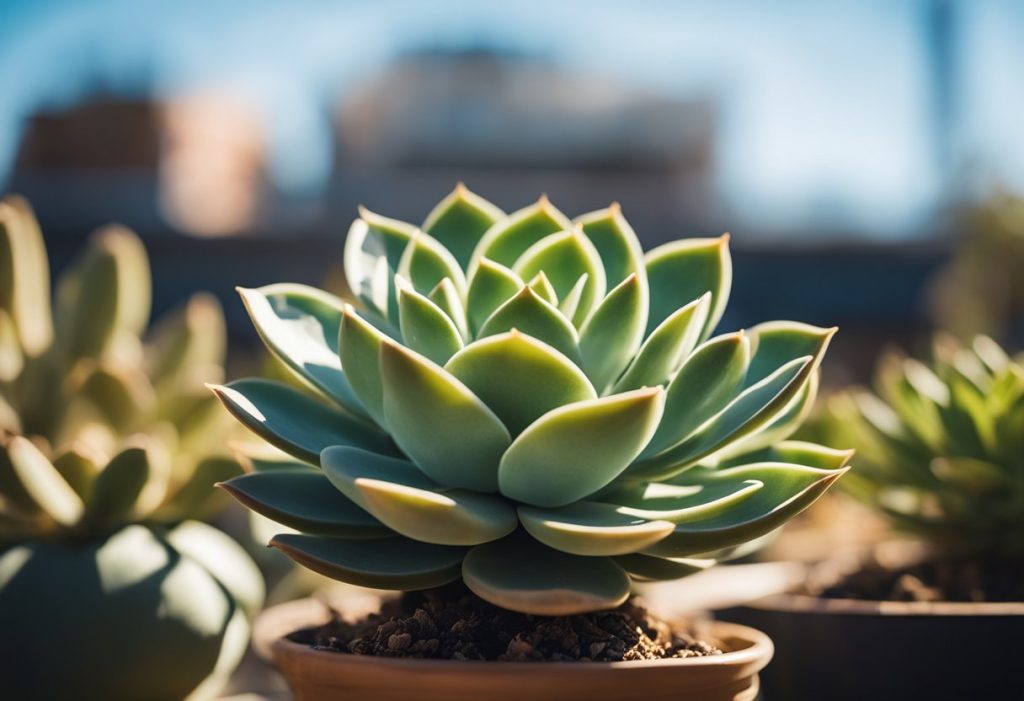
Proper care for Echeveria plants requires periodic maintenance that ensures healthy growth and development. Key tasks include regular pruning and repotting, which help your plant remain vibrant and resilient.
Pruning and Deadheading
Pruning helps keep your Echeveria succulent looking tidy and promotes strong growth. Remove any dead or damaged leaves with clean scissors, cutting as close to the base as possible. This practice prevents disease spread and allows for better airflow around the plant.
Deadheading involves removing spent flowers. Doing so not only enhances the plant’s appearance but also conserves energy, helping the plant direct its resources to new growth. Regular checks allow you to stay ahead of problems, ensuring your Echeveria stays attractive and healthy.
Repotting Guidelines
Repotting Echeveria is essential for maintaining a healthy plant. You should consider repotting every 1-2 years or when roots become crowded. Choosing the right pot is crucial; make sure it has drainage holes to prevent root rot.
Use a well-draining soil mix specifically designed for succulents. Gently remove the plant from its current pot, shake off the old soil, and trim any dead roots. Place the plant in the new pot, fill around it with fresh soil, and water sparingly. This helps your Echeveria thrive with the space it needs for growth.
Dealing with Pests and Diseases
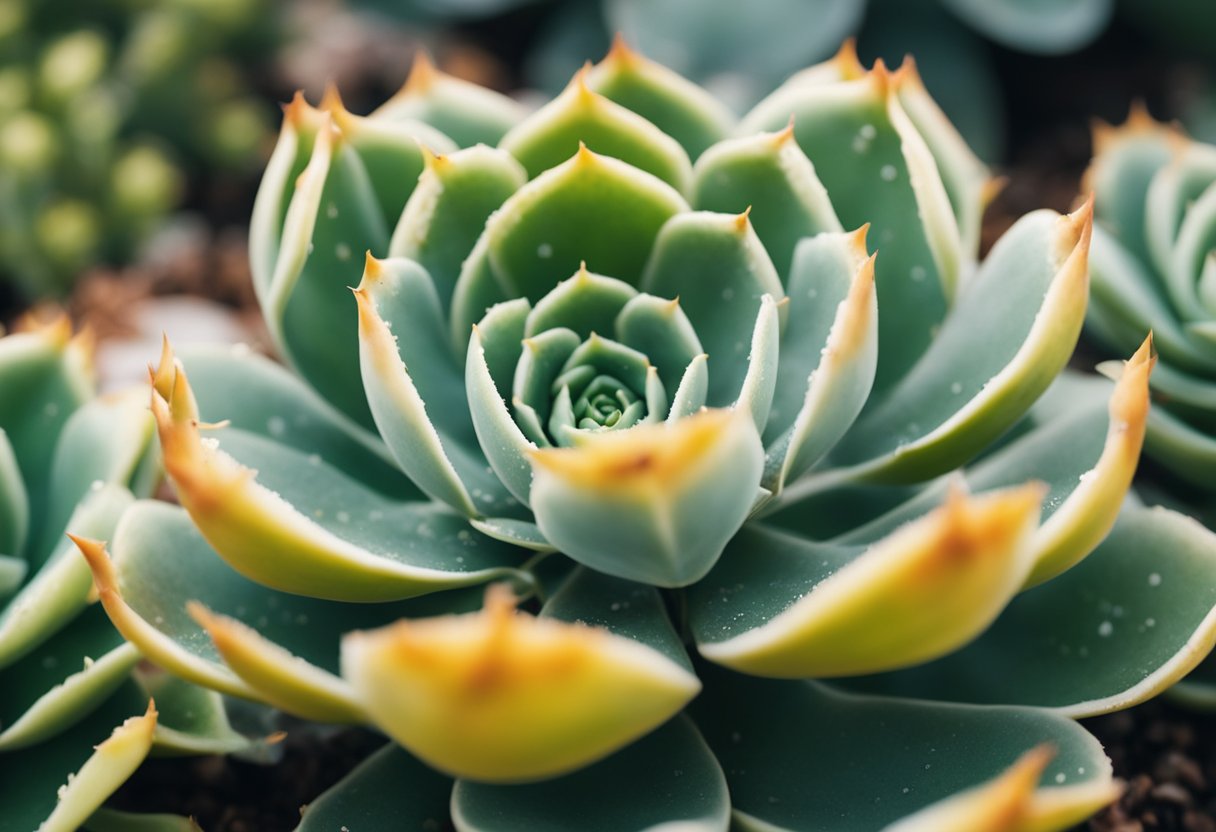
Echeveria plants can face challenges from pests and diseases that affect their health. Identifying common issues early and knowing how to address them ensures your plants remain vibrant.
Common Pests
Echeveria plants might attract pests like mealybugs, which look like small white cotton balls on your plant. They suck sap from the leaves, causing them to weaken. Aphids and spider mites are less common but can also be problems. They feed on the sap, causing leaves to curl and yellow.
To prevent and treat these pests, remove them with a cotton swab dipped in rubbing alcohol. Regularly inspect your plants and keep them clean to prevent infestations. Neem oil is an effective natural pesticide for treating and deterring pests but always experiment with a minimal amount and only on one plant at a time. Don’t do anything drastic to your entire collection of succulents all at once!
Disease Prevention and Treatment
Echeveria plants can suffer from fungal infections due to too much humidity or overwatering. Root rot is a concern if the soil doesn’t drain properly. Look for discolored, soft growth as a sign of disease.
You can prevent diseases by ensuring your Echeveria gets enough light and watering it only when the soil is dry. Keep humidity levels low, especially indoors. If root rot occurs, remove the affected roots and repot the plant in fresh, well-draining soil.
Fungicides can be used for managing severe fungal infections to protect the plant from further damage.
Echeveria Blooms
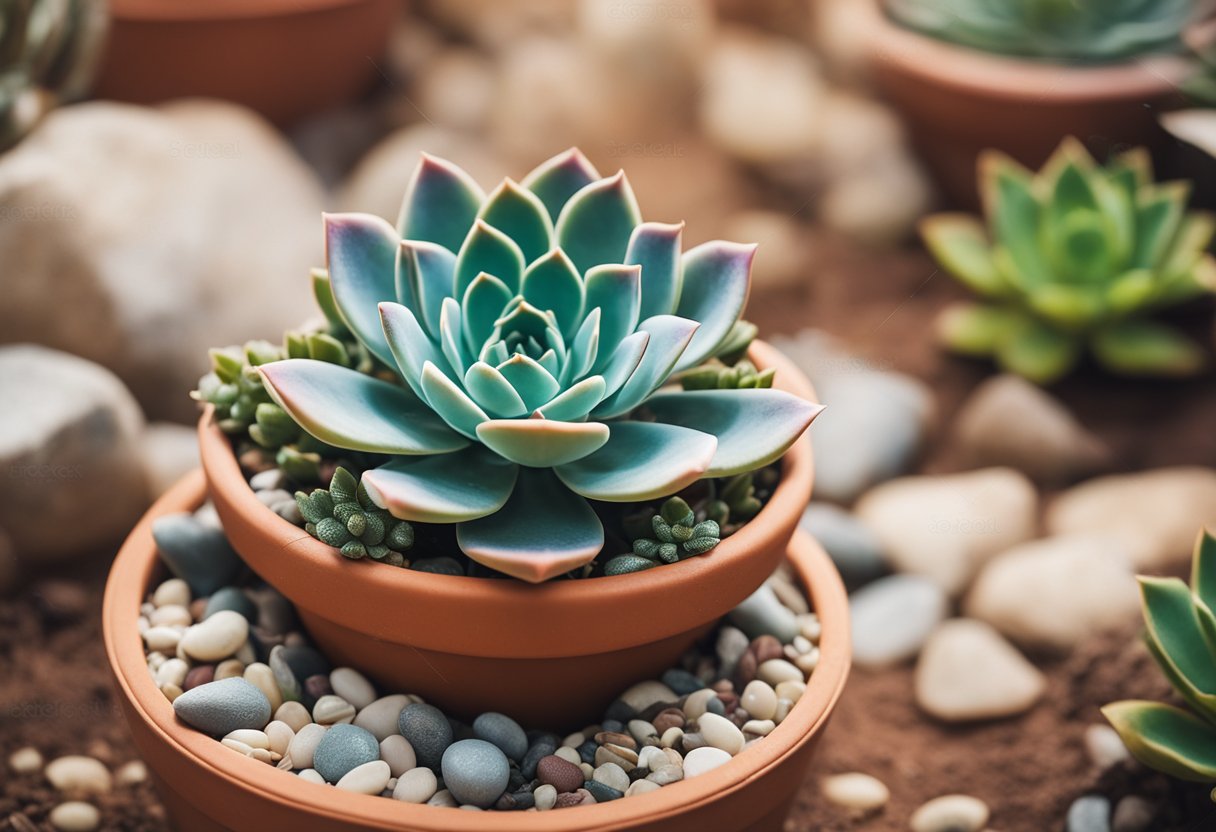
Echeverias are stunning succulents known for their rosette shape and vibrant blooms. With the right care, you can enjoy their flowers, which thrive under specific conditions.
Flowering and Aftercare
Echeveria plants need abundant sunlight to produce flowers. Make sure they get at least six hours of direct light daily. During the growing seasons, spring and summer, Echeverias may bloom if they have healthy foliage and are well-nourished.
Use a diluted high-phosphorus fertilizer like 5-10-5 to stimulate flowering. Once flowers appear, reduce watering to prevent root rot. As flowers fade, cut them back to direct the plant’s energy back to the leaves. With proper aftercare, your Echeveria will continue thriving and remain a centerpiece in your succulent collection.

